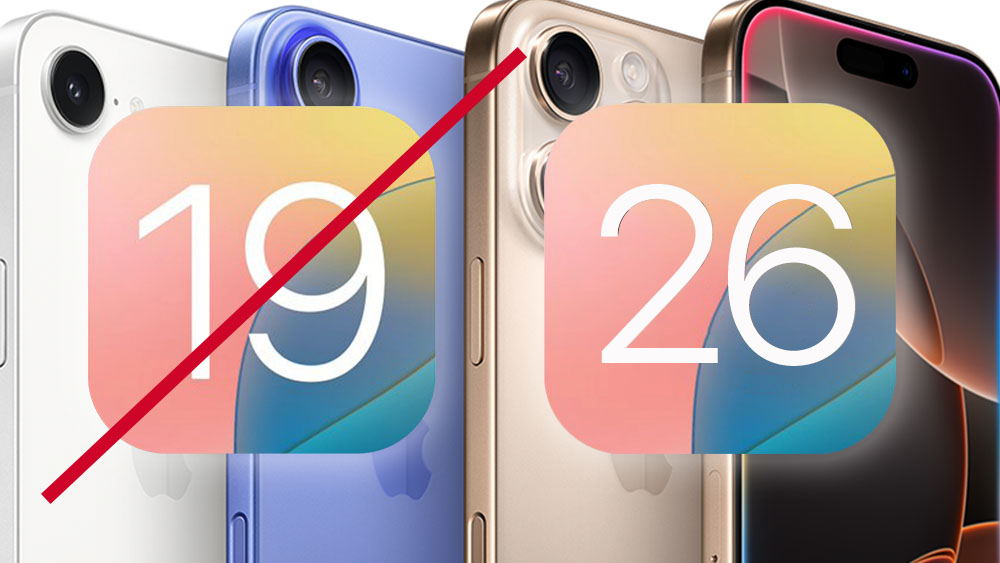Creating the whimsical digital art for hit trading card game Disney Lorcana
A trio of artists reveal what it takes to illustrate unique takes on Frozen, Mulan, The Jungle Book and other Disney animations.
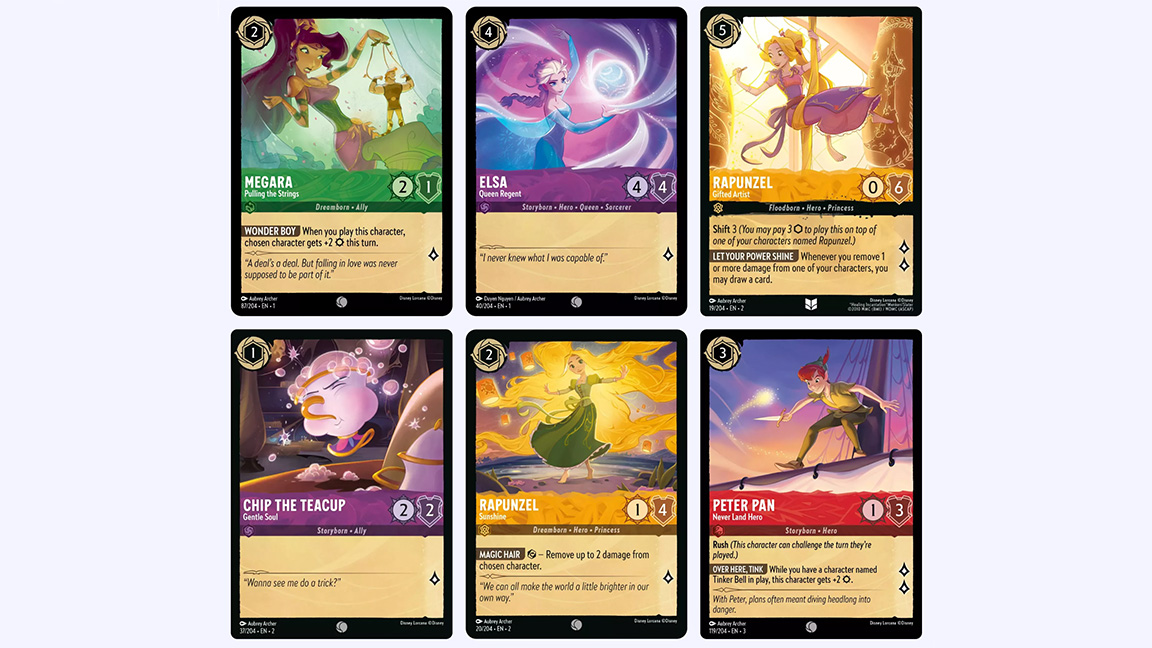
Disney Lorcana is the latest product to repackage Disney's most popular characters for new audiences. The trading card game launched in 2023 and became an instant hit with fans of Disney new and old. The game reimagines your favourite characters in exciting new ways, all playing their part in a dynamic and easy-to-pick-up card game for players, known as Illumineers. (Read our guides to the best cartoons of the 1950s and animations of the 1960s for inspiration.)
Its maiden set release, The First Chapter, flew off shelves and became instantly sought-after. Among its initial 204-card release were iconic Disney characters including Mickey Mouse, Simba from The Lion King, and Frozen’s Elsa. Disney Lorcana’s sixth set, Azurite Sea, was released last November with a nautical twist on many legendary names.
The game’s unforgettable art required equally talented artists, so we caught up with Kenneth Anderson, Lisanne Koeteeuw and Aubrey Archer to explore their roles in crafting the Inklands.
These artists use a mix of the best digital art software and the best drawing tablets to create these authentically charming Disney art cards.
Aubrey Archer
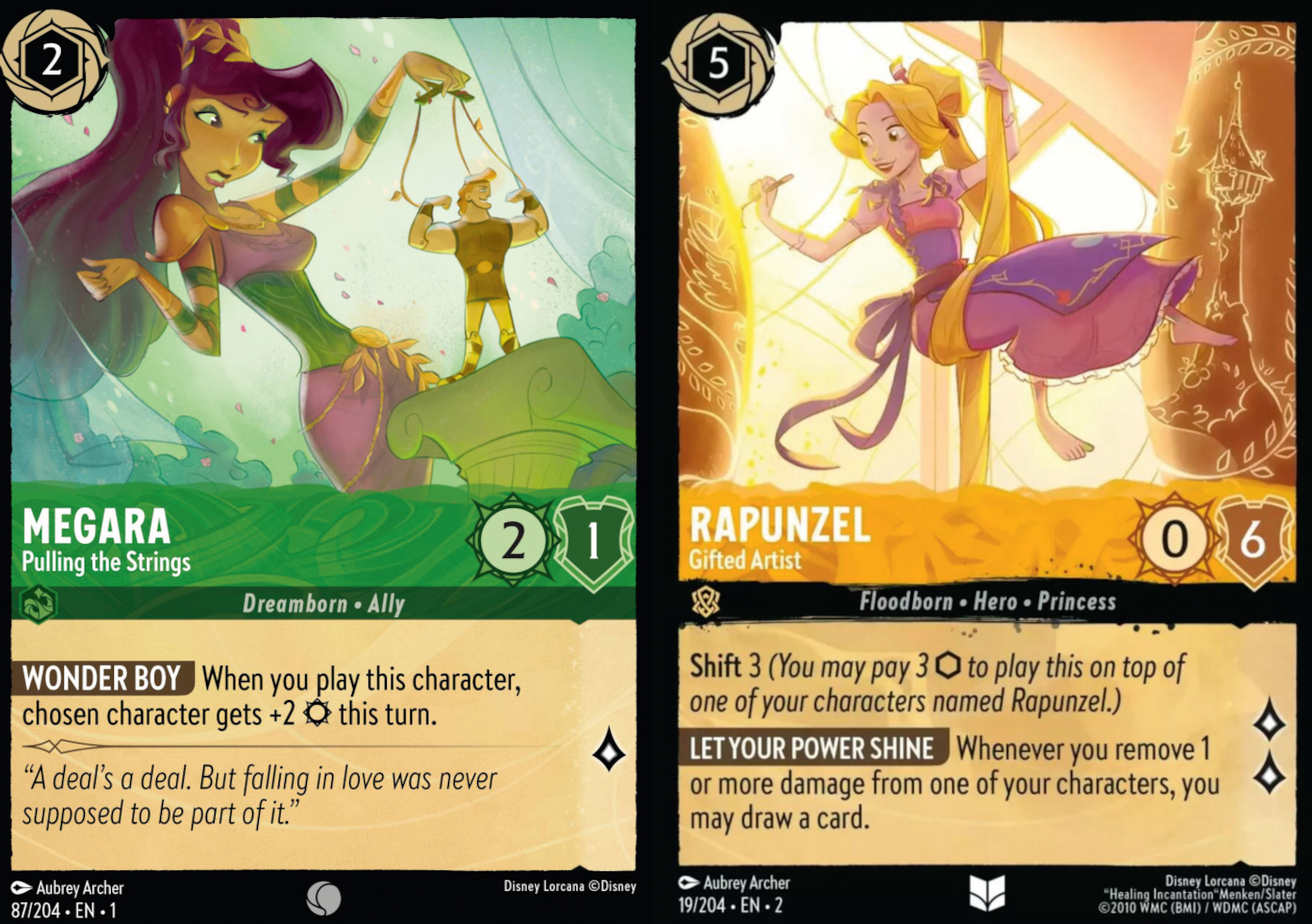
What brought you to Disney Lorcana?
My background is in concept art and character design for animation. Initially I was doing early concept designs when they were trying to decide what these new interpretations of Disney characters would look like, before we fully even knew what the six inks even were. I worked on some of those early concept visions, and Ravensburger were kind enough to give me the chance to illustrate the cards as well.
How does your style match with the Disney Lorcana aesthetic?
I think my personal style is whimsical, and it connects well with the game that way, but there’s also a lot of incredible work the art directing team does to make sure there’s a whimsical world for artists to play in.
What are the storytelling and character demands involved?
It’s really fun in Disney Lorcana because we’re not illustrating direct scenes from a movie. You’re basically putting a character in a whole new story every time you draw a new card. They’re never doing the exact same thing as in a movie. And if it’s very similar, you can take a creative license with the background, like making it more whimsical.
It’s fun because it feels like you get to tell a new story with the character, which is just a really fun part of the process. We’re telling new stories. Ideally, we’re telling the story of what the game card does. So when you're playing the game, it feels like what you're looking at. I put a lot of hearts into the illustrations.
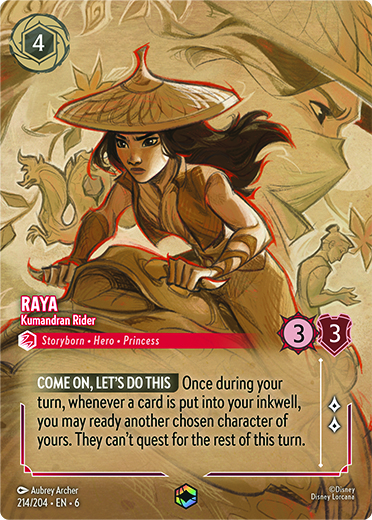
Is there a favourite card that you've worked on so far?
I’m pretty fond of Rapunzel –Appreciative Artist in the Ursula’s Return set. That one was a brand new take on Rapunzel that I got to do concept design for. I did some costume explorations for her, and we tried out different directions for it while still wanting it to remain very true to the character.
Which artists influence your work?
There are a lot! I really love the work of J.C. Leyendecker. It’s just so nice to look at, and he simplifies form in a way that relates to a cartoony style.
What’s special about the game?
For me, it’s that Lorcana gives gamers and Disney enthusiasts an exciting opportunity for socialising, friendship and connection.
Kenneth Anderson
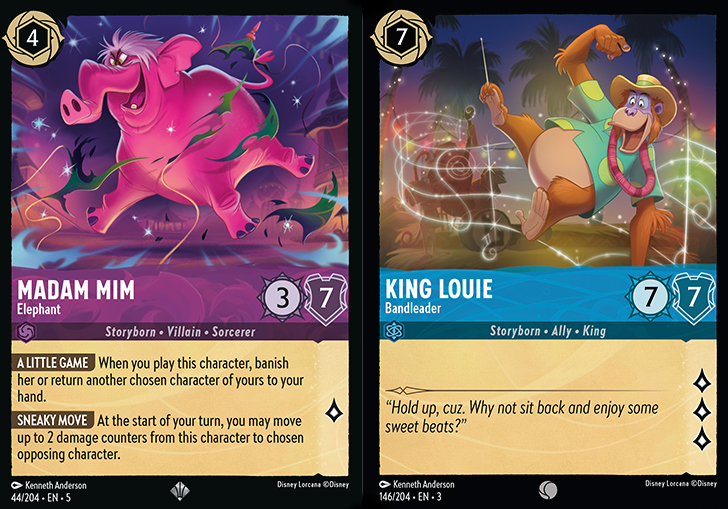
When did you begin working on Disney Lorcana?
I’ve been on it since the start. When I found out what it was, I remembered thinking it was an interesting project. Ravensburger seemed to like my art and asked if I wanted to work on the game. I think that was around 2020 or 2021. There was a lot of work to get the game ready for its eventual launch.
What was it about your illustration style that drew Ravensburger and Disney to you?
Over the years, a lot of people have said that my style is a little bit Disney-esque. I’ve also got an animation background. I don’t know whether Ravensburger knew that, but I think that maybe it comes across in my work. I don’t work with pencil and paper; I find digital faster.
What challenges have you faced illustrating the game?
It can be tricky to find the pose that sums up that moment or what’s going on in the character’s head. Getting The Glimmers [characters] to look right and trying to keep them on-model is a challenge, and you’ve got to take these characters and put them in completely different poses. Model Sheets of the characters will give you the shapes, but not necessarily the full performance.

How does the collaborative process work on Disney Lorcana?
We work with some amazing art directors, and they’re always keeping you on the right track. You send them some options, see what they like, and work from there. How quickly you nail the idea really depends on the complexity of the image.
Did you have an interest in Disney’s animation heritage before working on the game?
I grew up watching Disney, and I’m still very fond of the characters from my childhood.
Lisanne Koeteeuw
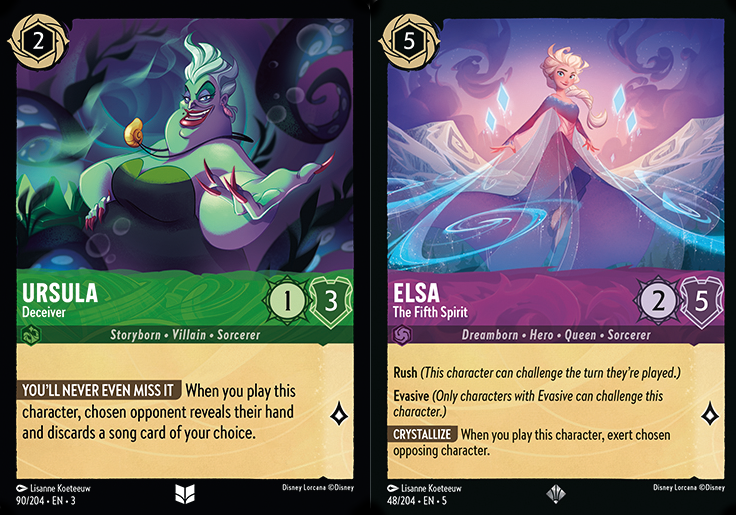
How did you begin working on Disney Lorcana?
I started in January 2023. Because I knew about Disney Lorcana already, and some of my art heroes were already working on it, my first reaction was “this is not real”.
What did Ravensburger and Disney respond to in your portfolio?
What I heard was that “we think your style would be a good fit with what we want for Disney Lorcana”. So it wasn’t a particular piece but an overall vibe that matched. It’s been a great experience to be part of.
How does your work on the game connect to your interest in Disney’s animated character heritage?
I grew up on Disney movies, so I’ve always been a fan. As a child, I would watch the VHS tapes at home and at my grandma’s house. It had been a bucket-list thing to work on a Disney product and now it’s here. It’s awesome! If you’d told five-year-old me, watching The Little Mermaid, she wouldn’t have believed it.
What cards and characters have you worked on so far for Disney Lorcana?
The first card that I got to illustrate was Ursula – Deceiver in the Into the Inklands set that came out in March 2024. From that point onwards, I’ve had cards in every set. I also illustrated Elsa – The Fifth Spirit and Wreck-It Ralph – Demolition Dude, both of which ended up being included in the Amethyst and Ruby starter deck for the Shimmering Skies expansion.
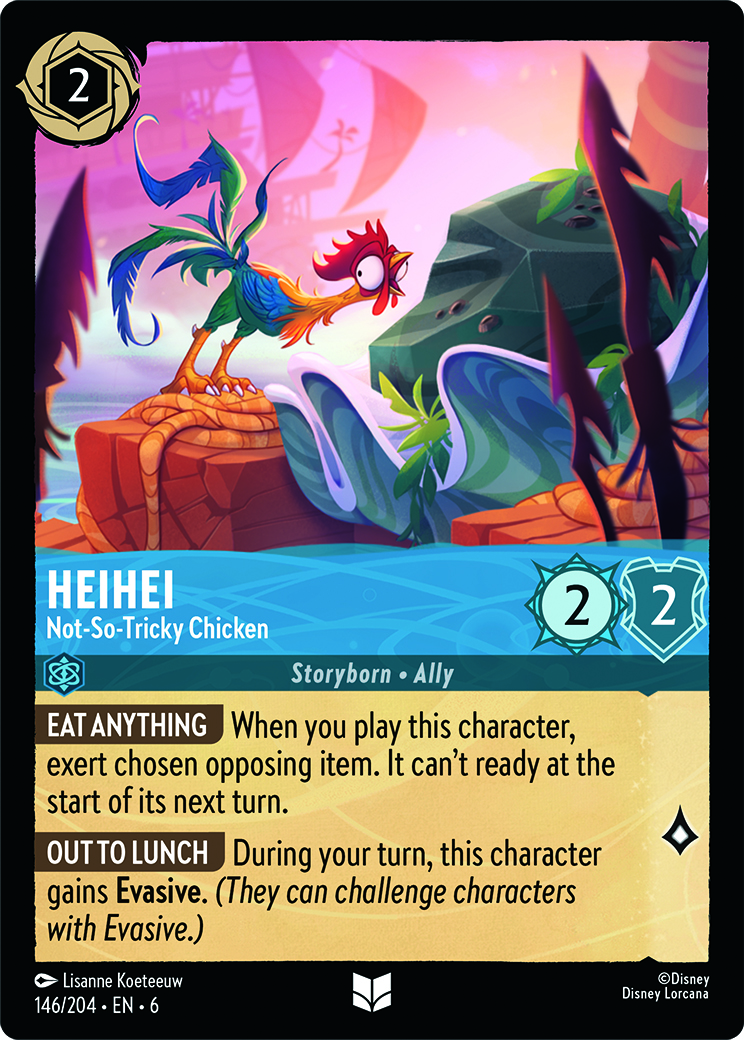
What are some of the creative challenges involved in developing art for the game?
Illustrating Ursula was a bit of a challenge, but you have a lot of freedom in how you want to approach it. You have to get into the mind of each character. Ursula’s mindset, for example, is a different vibe than Peter Pan’s, so you approach that differently in terms of shapes and gestures, and what a particular character is supposed to convey.
I’ve illustrated a lot of villains for the game so far. I’ve done Ursula, Iago, Captain Hook and Ursula in her form as a bride. I’ve also illustrated many good characters including Prince Eric, Wreck-It Ralph and Elsa. As I said earlier, the Wreck-It Ralph and Elsa pieces were also included on the set’s packaging. When creating packaging characters, they’re lit from the front so that there are no shadows.
Which artists influence your work?
J.C. Leyendecker, Alphonse Mucha, Edward Gorey and Loish. I was surprised to be asked to illustrate for Disney Lorcana because I haven’t worked with colour for that long; I’m mostly a black and white artist.
This content originally appeared in ImagineFX magazine, the world's leading digital art and fantasy art magazine. ImagineFX is on sale in the UK, Europe, United States, Canada, Australia and more. Limited numbers of ImagineFX print editions are available for delivery from our online store (the shipping costs are included in all prices)
Get the Creative Bloq Newsletter
Daily design news, reviews, how-tos and more, as picked by the editors.

Thank you for reading 5 articles this month* Join now for unlimited access
Enjoy your first month for just £1 / $1 / €1
*Read 5 free articles per month without a subscription

Join now for unlimited access
Try first month for just £1 / $1 / €1

James has written about movies and popular culture since 2001. His books include Blue Eyed Cool: Paul Newman, Bodies in Heroic Motion: The Cinema of James Cameron, The Virgin Film Guide: Animated Films and The Year of the Geek. In addition to his books, James has written for magazines including 3D World and Imagine FX.
You must confirm your public display name before commenting
Please logout and then login again, you will then be prompted to enter your display name.
